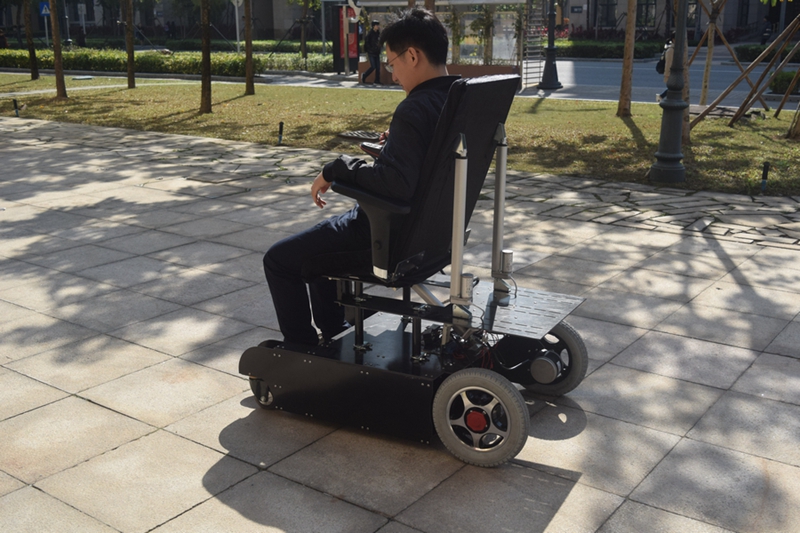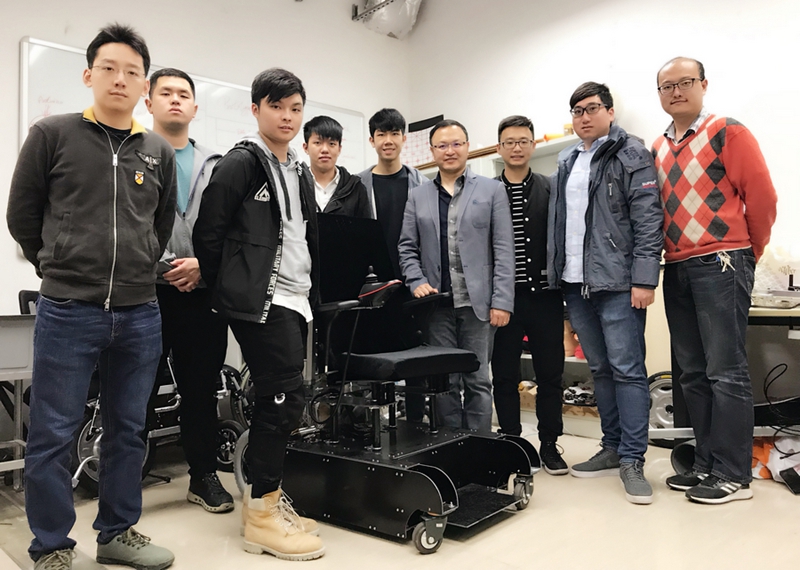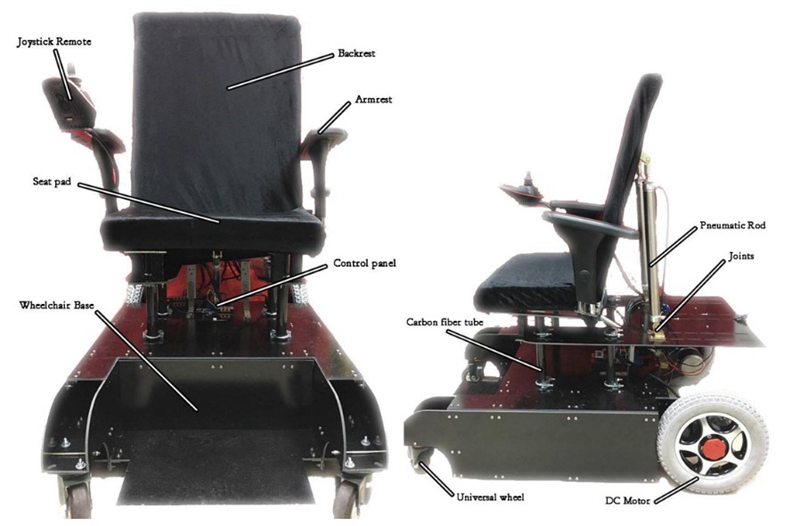Recent statistics demonstrate that Macao’s aging population is growing at a steady pace. Barrier-free public facilities are considered to be crucial to the lives of the disadvantaged and people with mobility impairments. Smart city technology is important to social development, but unfortunately, there is a lack of research studies in this field which contribute to the creation of barrier-free living environments. With this in mind, our research team has applied research outcomes in smart city technology to the design of an innovative and convenient smart wheelchair, a practical product whose aim is to help the disadvantaged and the elderly in their daily lives.
Multifunction Intelligent Electric Wheelchair
Designed with human factors engineering and ergonomic concepts in combination with artificial intelligence (AI) algorithms, our innovative multifunction Intelligent Electric Wheelchair can satisfy the needs of the disadvantaged and the elderly with mobility impairments. The chair can be controlled via three methods: muscle signal control (EMG), brain wave control (EEG), and mobile application.
Our research study has three core components: the multi-control methods of the Intelligent Electric Wheelchair, innovative function design, and appearance design. The design of the chair is ergonomic and takes into consideration the human anatomy of Macao residents. The smart wheelchair allows a variety of seating positions so users can adopt different postures. Tis function helps to improve users’ health by preventing them from staying in the same posture for too long. Different control methods, including Myo armband, EEG, and mobile applications, can benefit different users according to their individual needs in different environments.
Adjust Gesture Armbands to Meet Local Needs
Gestural control methods enabled by Myo armband equipment may be used to control the Intelligent Electric Wheelchair. However, this feature is currently limited to five different gestures, including wave in/out, spread, double tap, and fist. In the future, we plan to develop more gestures to fulfill specific needs of different users. In addition, the armband was originally designed for Western operators, whose arm muscles are different than those of Asians. Tus, the accuracy of gesture recognition on the armband require further adjustment to meet the needs of Macao residents. To improve the armband’s gesture prediction function, the research team studied the autoregressive method by the Akaike information criterion, Wavelet method in intensity analysis, and the Hilbert-Huang transform method. The team also extracted significant factors from surface electroMyography of muscles and used them to predict gestures, with the help of various machine learning techniques, including Genetic Algorithms–Back Propagation Neural Network method, Particle Swarm Optimisation–Back Propagation Neural Network method, Support Vector Machine method, and Extreme Learning Machine method. This allows the Myo armband to be used by the disadvantaged and the elderly in Macao.
Intelligent Wheelchair Control System
This Intelligent Electric Wheelchair has been designed with ergonomic concepts and AI algorithms to provide different innovative functions. The chair can collect data from the user’s body, such as pressure mapping data of various seating postures and EMG signal. The data can help to improve the design of buildings and facilities which the SAR government or public departments may construct in the future. For example, public facilities, such as bus stops or parks, can be enhanced with the help of this scientific data, which will ultimately improve the quality of life of the disadvantaged and the elderly by using smart city technology.
Wheelchairs can easily create pressure ulcers in elderly users because they demand long periods of sitting time. In order to solve this problem, based on the pressure data of human body surface, in the future our team will use machine learning algorithms and neural network algorithms to derive a mathematical model for the prediction of pressure ulcers. Based on this model, our research team will develop an intelligent wheelchair nonlinear control system. Our ultimate goal is to create an intelligent wheelchair control system that uses deep learning algorithms to prevent pressure ulcers.



